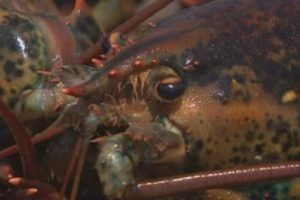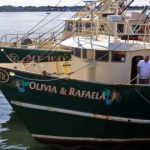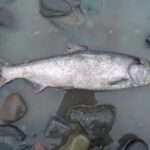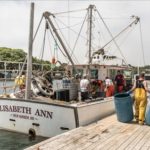Jim Lovgren – Fishery managers responsible for Summer Flounder mismanagement
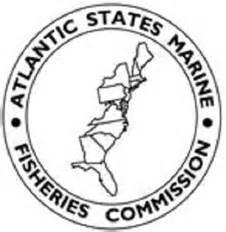 Earlier this year the state of New Jersey was found to be out of compliance by the Atlantic States Marine Fishery Commission [ASMFC] in regard to the proposed recreational catch specifications for Summer Flounder, [ fluke].The ASMFC which jointly manages summer flounder with the Mid Atlantic Fishery Management Council, [MAFMC] had recommended an increase in the recreational size limit for Summer Flounder to 19 inches for New Jersey. New Jersey fishery management representatives balked at that proposal and instead presented an alternative proposal that would keep the size limit at the present 18 inches but with a shorter season which would still meet the conservation goals as the Commission’s plan.
Earlier this year the state of New Jersey was found to be out of compliance by the Atlantic States Marine Fishery Commission [ASMFC] in regard to the proposed recreational catch specifications for Summer Flounder, [ fluke].The ASMFC which jointly manages summer flounder with the Mid Atlantic Fishery Management Council, [MAFMC] had recommended an increase in the recreational size limit for Summer Flounder to 19 inches for New Jersey. New Jersey fishery management representatives balked at that proposal and instead presented an alternative proposal that would keep the size limit at the present 18 inches but with a shorter season which would still meet the conservation goals as the Commission’s plan.
The Commission denied this alternative and declared New Jersey out of Compliance, an action that would result in the shutdown of the Summer Flounder fishery, both recreational and commercial sometime later this summer. Unfairly this shutdown would have occurred after the recreational season was over, and would only impact New Jersey’s commercial fishermen, who are already struggling with a 50% cut back in the quota over the last two years.
New Jersey appealed the ASMFC’s finding of non-compliance to U.S. Department of Commerce Secretary Wilbur Ross, who on July 11th announced that he agreed with New Jersey, and found its proposed specifications would meet the mandated conservation goals as well as the Commissions regulations would. On July 14th the Commission responded with a “sky is falling” press release objecting to the Secretary’s decision, and setting up New Jersey as the fall guy for the so called collapse of the stock.
Sadly, yet predictably- this is just another example of misdirection by those organizations that are charged with managing our fisheries. The Fishery managers need only look in the mirror to fix any blame for why the Summer Flounder stock seems to be in trouble, [A contention I firmly disagree with]. It is their mismanagement that has caused the recreational industry to target only the largest breeders in the biomass, killing the large females that produce the most viable eggs, while at the same time causing millions of Fluke to be discarded dead every year even though they are perfect sized for eating, 14 to 18 inches, they are legally too short according to this misguided management.
Fifteen years ago, as a member of the MAFMC, I stated to this group that the constant increasing of the recreational size limit was at some point going to do more damage than good. I said then that I believe that once you reach a size limit of 16 or more inches that the effects of discarding would nullify any gains from reducing the catch by increasing the size limit. At that time, with a possession size limit of 16 inches, I estimated a five to one discard to catch rate. That has since climbed to twenty to one in some areas, meaning that to catch a single “keeper”, an angler will discard 19 smaller fish.
Obviously many of those twenty fish will die, and the National Marine Fishery Service is sticking with a 10% mortality rate for those discards. I personally know of nobody who believes that percentage to be correct. It may well be 50% mortality. Regardless of what the real mortality rate is, even at 10% with a twenty to one keeper rate, that’s millions of dead fish annually, and hundreds of thousands of disaffected anglers, who now disregard the regulations because they find them ridiculous. I urged the Council/Commission to do the math, find the number where discard mortality negates any benefits from increasing the size limit, and work with that. They never did.
I have been commercial fishing for over forty years and Summer Flounder is my primary target. The stock reached a historical high level about five years ago and has since declined slightly according to my fishing experience. The last two years I’ve noted a small decline in my catch per unit of effort, but this year I have seen the best recruitment of 14 and 15 inch fish I have seen in at least five years. This past month my CPU has been the best ever, resulting in short day trips of 5 hours dock to dock for my 500 pound trip limit. One two hour tow, and go home. The two month season lasted 2 weeks thanks to the ease of catch, combined with the recent reductions in quota . The Summer Flounder stock is still near the historic high level of spawning stock biomass yet the fishing industry is allowed to catch only 20% of the landings that were common 35 years ago with a lower spawning stock biomass.
There is no shortage of Summer Flounder only some angry stock assessment scientists who’re still mad that the fishing industry hired their own scientist a few years back to do his own independent stock assessment using the same NMFS data. Lo and behold Dr. Maunder discovered the science was wrong. Coincidentally the fishing industry has hired their own scientists on the east coast for two other fisheries, scallops, and monkfish. In both those fisheries the North East Fisheries Science Center’s stock assessment science was found to be wrong, resulting in a higher quota for the species. So it seems like there is a pattern regarding the NEFSC, if an independent scientist examines the same data that a NEFSC scientist does, he gets vastly different results, that prove the quota’s have been set too low.
This brings up the National Academy of Science’s review of all of the fishery management plans that underwent rebuilding after being found to be overfished since the Sustainable Fisheries act was implemented in 1996. They discovered that in the whole country twenty stocks underwent rebuilding plans that were later found to have not needed them, causing reductions in quota, closures, and putting people out of business. Amazingly the study found that of those twenty stocks ten of the wrong assessments originated in the NEFSC. There are 6 Fishery Science Centers in the U.S. and no other one had more than two mistakes. Not included in the study was Butterfish, and Menhaden which were erroneously declared overfished after the study was concluded, which were also wrongly assessed by the NEFSC. That makes 12 out of 22 stocks wrongly assessed by the NEFSC which is clear incompetence in anybody’s book. These mistakes cost the American public hundreds of millions of dollars, yet no one was held accountable, and the results were swept under the rug.
A decade before the National Academy of Science study, “Trawlgate” occurred where it was discovered that a trawl survey vessel had been towing their net around for at least two annual surveys with one tow cable shorter than the other. As a result a Trawl survey advisory group was formed, [of which I was a member] and they designed a new net for the new survey vessel that was soon to be deployed. This net was going to use two different sweeps, a large “rock Hopper” sweep for the Gulf of Maine with 12 inch rubber “cookies”, while a smaller 4 inch “cookie” sweep would be used in the Georges Bank and Mid Atlantic regions due to their sand/ mud bottom habitat. The 4 inch cookie sweep is the industry standard size and is designed to catch flatfish, and other demersal species. The large Rock Hopper just runs over flatfish. At the same time the NEFSC cancelled their annual winter trawl survey which was designed to catch flatfish, explaining that by using the new 4 inch cookie sweep in the spring and fall surveys they should get accurate data on flatfish. Within months of the winter survey cancellation they decided that they would only use the large rock hopper sweep throughout the whole of the survey area, resulting in the abandonment of the trawl survey advisory panel, as industry members quit in disgust.
With that track record in mind we return to Dr. Maunder who discovered that although Summer Flounder stock assessments had been being performed for over 40 years no one happened to notice that males rarely grew bigger than 17 inches, and that fish bigger than 18 inches are almost all female. Not taking this important basic biological fact into consideration in doing a stock assessment is going to lead to very inaccurate spawning stock biomass numbers, and hence, “surprise” another wrong assessment . How embarrassing, of course doing the science right resulted in an increased quota. NMFS has been trying to get those fish back ever since.
So now the ASMFC is mad and wants blood from New Jersey. I guess they are not happy enough with every plan they develop stealing quota from New Jersey’s commercial and recreational fisheries to enrich their own states. They started this with the commercial Black Sea Bass fishery where under the proposed state by state quota system New Jersey would receive somewhere between 28 and 38 % of the whole quota due to its large historic landings, but a select group held a secret lunch time meeting where they agreed to reduce New Jersey’s share to 20% and buying other states votes by giving them a piece of New Jersey’s quota. Hard to vote against that. I’d like to see North Carolina willingly give up 10% of the Summer Flounder quota, fat chance that would ever happen. The ASMFC then went after New Jersey’s recreational fishing quota’s where they created regions in both Summer flounder, and Black Sea Bass, so that neighboring states with less historic quota could steal from New Jersey some more. The ASMFC has created a corrupt system where if you are not a member in standing of their “Good old boys network” they will set up votes and steal your quota. This has to end and the power of the ASMFC to steal has to be stopped. So Congratulation to Secretary Ross for his well reasoned decision. As for the Commission and the Council, get your act together and develop a management plan that does not target all the spawning stock biomass, while creating an enormous discard problem, think about a slot limit or total length, idea’s that have been suggested for decades, and ignored.
Jim Lovgren

































